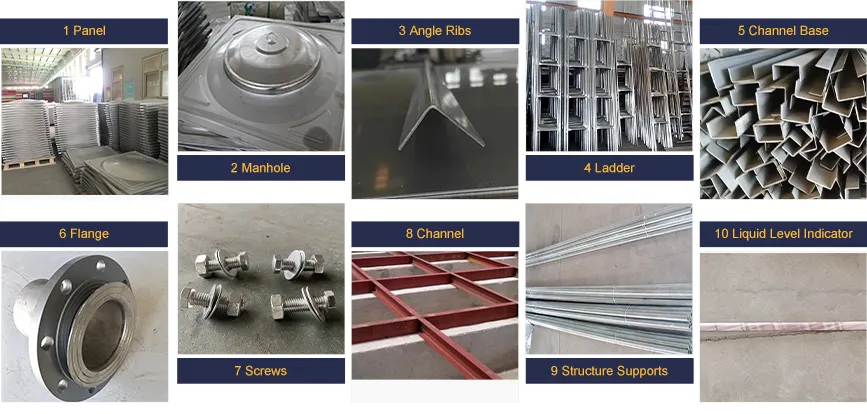loading...
- No. 9, Xingyuan South Street, Dongwaihuan Road, Zaoqiang County, Hengshui, Hebei, China
- admin@zjcomposites.com
- +86 15097380338
- Welcome to visit our website!
Exploring the Characteristics and Applications of Group Structures in Mathematics
Understanding GRP Structures A Comprehensive Overview
Glass Reinforced Plastic (GRP), also known as fiberglass, has gained significant traction across various industries due to its impressive strength-to-weight ratio, durability, and versatility. GRP structures are engineered using a composite of glass fibers and a resin, which together create a strong yet lightweight material suitable for a multitude of applications. This article explores the key features, advantages, and applications of GRP structures.
Composition and Manufacturing
At the core of GRP structures are two main components glass fibers and resin. The glass fibers provide structural strength and rigidity, while the resin acts as a binding agent, holding the fibers together and protecting them from environmental factors. Commonly used resins include polyester, vinyl ester, and epoxy, each offering varying degrees of strength, thermal resistance, and chemical stability.
The manufacturing process of GRP typically involves techniques such as hand lay-up, spray-up, and resin transfer molding (RTM). In the hand lay-up method, layers of glass matting are manually laid into a mold and then saturated with resin. This technique is favored for larger, custom parts, while RTM allows for more precise control of the resin and fiber placement, resulting in a finished product with less void space and enhanced mechanical properties.
Benefits of GRP Structures
The advantages of GRP structures are numerous, making them an ideal choice for a variety of applications
1. Lightweight GRP is significantly lighter than traditional materials like steel or concrete. This property facilitates easier handling, transportation, and installation, thereby reducing overall logistical costs.
2. Corrosion Resistance One of the standout features of GRP is its resistance to a wide range of chemicals and environmental conditions. This makes it particularly suitable for applications in corrosive environments such as wastewater treatment plants, chemical processing facilities, and marine applications.
grp structures

3. Design Flexibility The molding processes used in GRP production allow for the creation of intricate shapes and designs. This flexibility enables engineers and architects to push the boundaries of creativity while adhering to structural requirements.
4. Low Maintenance GRP structures require minimal maintenance compared to traditional materials. Their durable nature and resistance to rot, rust, and corrosion translate into lower lifecycle costs.
5. Good Insulation Properties GRP materials possess excellent thermal and electrical insulation properties, making them suitable for use in industries ranging from construction to electronics.
Applications of GRP Structures
The versatility of GRP structures has led to their adoption in a wide array of sectors. In the construction industry, GRP is often used for roofing, cladding, and flooring due to its lightweight and durable nature. In transportation, GRP is utilized for manufacturing components of vehicles, boats, and trains, benefiting from its strength without the added weight.
Furthermore, in the agricultural sector, GRP is increasingly used for water tanks and pipes, particularly in irrigation and drainage systems. The renewable energy sector also leverages GRP for wind turbine blades, where its strength and lightweight characteristics are critical for efficiency and performance.
Conclusion
In summary, GRP structures represent a significant advancement in materials science, offering a perfect combination of strength, durability, and versatility. With ongoing advancements in manufacturing techniques and material formulations, the potential for GRP continues to expand, promising a bright future for its applications across various industries. As organizations continue to seek lightweight and durable solutions, GRP will undoubtedly play a pivotal role in the evolution of modern engineering and construction practices.
-
The Rise of FRP Profiles: Strong, Lightweight, and Built to LastNewsJul.14,2025
-
SMC Panel Tanks: A Modern Water Storage Solution for All EnvironmentsNewsJul.14,2025
-
GRP Grating: A Modern Solution for Safe and Durable Access SystemsNewsJul.14,2025
-
Galvanized Steel Water Tanks: Durable, Reliable, and Ready for UseNewsJul.14,2025
-
FRP Mini Mesh Grating: The Safer, Smarter Flooring SolutionNewsJul.14,2025
-
Exploring FRP Vessels: Durable Solutions for Modern Fluid HandlingNewsJul.14,2025
-
GRP Structures: The Future of Lightweight, High-Performance EngineeringNewsJun.20,2025
